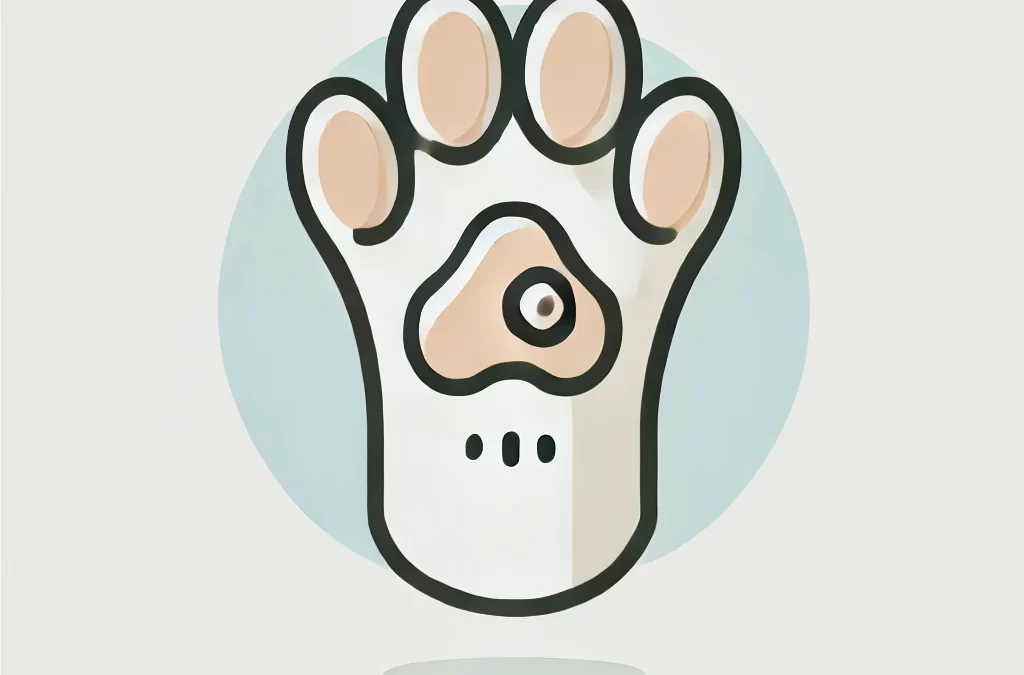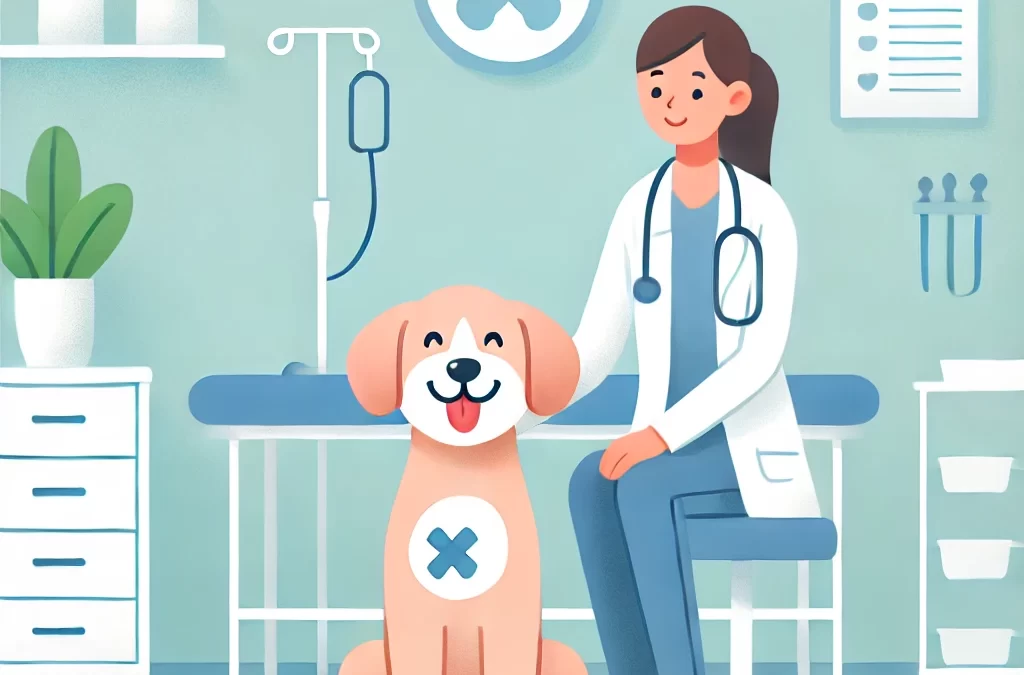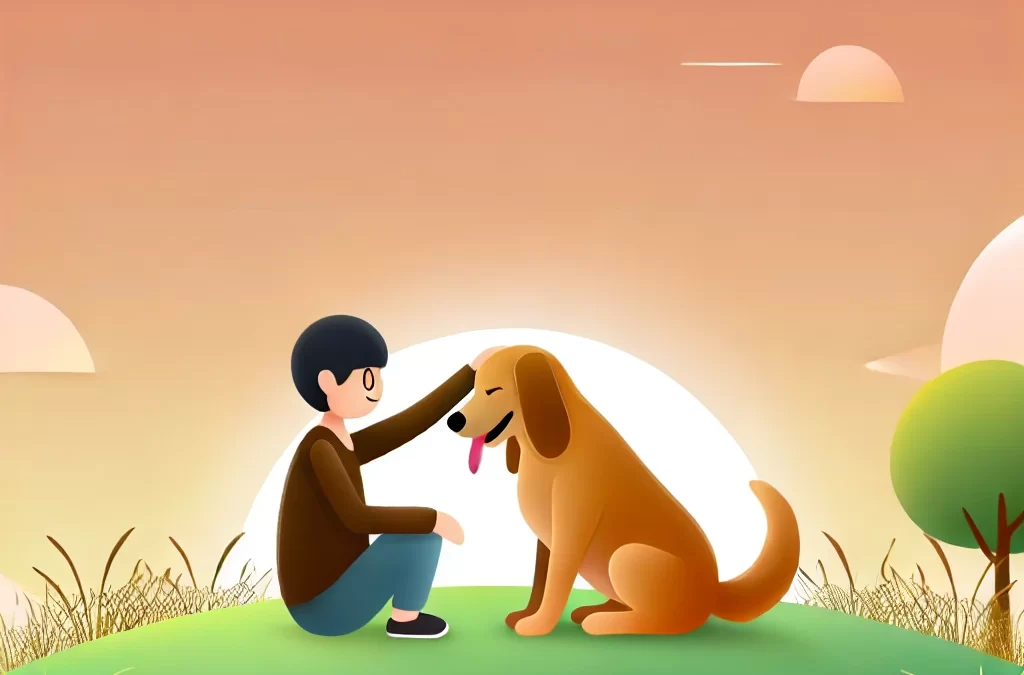
utworzone przez TCMVET | 29 listopada 2024 | Rak i guzy u psów
W obliczu emocjonalnego i finansowego ciężaru diagnozy guza u psa, wielu właścicieli zwierząt czuje się przytłoczonych kosztami związanymi z leczeniem. Jednak niedrogie usunięcie guza u psa jest nie tylko możliwe, ale także dostępne przy odpowiednich zasobach i odrobinie kreatywności. Ten przewodnik bada unikalne i praktyczne sposoby, aby zapewnić swojemu futrzanemu przyjacielowi opiekę, której potrzebuje, bez nadwyrężania portfela.
Zrozumienie typów nowotworów i konieczności ich usunięcia
Nie wszystkie guzy wymagają natychmiastowej interwencji chirurgicznej. Niektóre, takie jak lipoma (łagodne tłuszczaki), mogą stanowić niewielkie lub żadne zagrożenie dla zdrowia psa. Pierwszym krokiem do podjęcia świadomej decyzji jest konsultacja z lekarzem weterynarii w celu oceny charakteru guza. Jeśli usunięcie zostanie uznane za konieczne, rozważ opłacalne opcje rozwiązania problemu.
Kreatywne podejście do niedrogiego usuwania guzów u psów
Szkoły weterynaryjne: nauka i oszczędzanie
Szpitale weterynaryjne często oferują tańsze usługi, ponieważ studenci, pod okiem doświadczonych specjalistów, wykonują procedury. Podczas gdy koszty są obniżone, jakość opieki pozostaje wysoka, co czyni to doskonałą opcją dla właścicieli zwierząt domowych, którzy zwracają uwagę na budżet.
Kliniki weterynaryjne non-profit
Wiele organizacji non-profit i organizacji zajmujących się dobrostanem zwierząt oferuje dotowaną opiekę weterynaryjną, w tym usuwanie guzów. Organizacje badawcze w Twojej okolicy, które wspierają właścicieli zwierząt domowych o niskich dochodach, takie jak oddziały Humane Society lub SPCA, które mogą zapewnić pomoc finansową.
Platformy finansowania społecznościowego
Platformy takie jak GoFundMe lub Waggle pozwalają właścicielom zwierząt domowych dzielić się historią swojego psa i zbierać fundusze na zabiegi medyczne. Szczera opowieść i zdjęcia mogą zachęcić darczyńców do przyczynienia się do dobrego samopoczucia Twojego zwierzaka.
Plany płatności z lokalnymi weterynarzami
Niektóre kliniki weterynaryjne są otwarte na ustalanie planów płatności za kosztowne operacje. Ta opcja pozwala rozłożyć koszt na kilka miesięcy, łagodząc natychmiastowy ciężar finansowy.
Zrób to sam: regeneracja i pielęgnacja
Chociaż sam zabieg powinien być zawsze wykonywany przez licencjonowanego lekarza weterynarii, możesz zaoszczędzić pieniądze, zarządzając opieką pooperacyjną w domu. Dowiedz się, jak czyścić rany, podawać leki i stworzyć wygodną przestrzeń do rekonwalescencji dla swojego psa, aby zminimalizować dodatkowe wizyty w klinice.
Rozważanie alternatyw: Kiedy operacja nie wchodzi w grę
Jeśli operacja przekracza Twoje możliwości finansowe lub nie jest zalecana ze względu na stan zdrowia Twojego psa, alternatywne terapie mogą pomóc w leczeniu guza. Niektóre holistyczne opcje obejmują:
- Suplementy ziołowe: Naturalne środki lecznicze, takie jak kurkuma, kadzidło i formuły TCM, takie jak Chuanxiong, znane są ze swoich właściwości przeciwzapalnych.
- Olejek CBD: Olejek CBD o pełnym spektrum działania może pomóc w zmniejszeniu stanu zapalnego i poprawie ogólnego samopoczucia.
- Zmiany w diecie: Dieta przeciwnowotworowa skupiająca się na pełnowartościowych produktach o niskiej zawartości węglowodanów i wysokiej zawartości białka może spowolnić wzrost guza.
Środki zapobiegawcze w celu uniknięcia przyszłych kosztów
Opieka zapobiegawcza może zmniejszyć prawdopodobieństwo powstania guzów. Regularne kontrole weterynaryjne, zrównoważona dieta i unikanie narażenia na substancje rakotwórcze, takie jak dym tytoniowy, mogą promować zdrowsze życie dla Twojego psa. Wczesne wykrycie jest kluczowe; małe guzy są zazwyczaj łatwiejsze i tańsze w leczeniu niż zaawansowane.
Współczucie i pomysłowość: klucze do niedrogiej opieki zdrowotnej
Znalezienie niedrogich opcji usuwania guzów u psów wymaga pomysłowości i determinacji. Korzystając z organizacji non-profit, wsparcia społeczności i alternatywnych terapii, możesz zapewnić swojemu psu opiekę, której potrzebuje, bez trudności finansowych. Pamiętaj, że Twoja kreatywność i miłość do Twojego zwierzaka mogą utorować drogę do współczujących i skutecznych rozwiązań.
Niezależnie od tego, czy poprzez połączenie z siecią niedrogich dostawców opieki, czy przyjęcie holistycznego podejścia, zdrowie Twojego psa nie musi wiązać się z nieprzezwyciężalnymi kosztami. Niech ta podróż przypomni nam o niezachwianej więzi między zwierzętami a ich właścicielami — relacji wartej każdego wysiłku.

utworzone przez TCMVET | 28 listopada 2024 | Rak i guzy u psów
Kiedy Twój pies zaczyna utykać lub nadmiernie lizać łapy, winowajcą może być torbiel międzypalcowa — stan zarówno powszechny, jak i niepokojący. Chociaż te torbiele są zazwyczaj łagodne, ich wygląd może czasami prowadzić właścicieli zwierząt do pytania: czy może to być oznaką czegoś bardziej złowrogiego, na przykład raka? Przyjrzyjmy się temu tematowi świeżym okiem, badając różnice, potencjalne powiązania i jak najlepiej podejść do tych kwestii dla dobra Twojego psa.
Czym są torbiele międzypalcowe?
Torbiele międzypalcowe, znane również jako czyraki, to wypełnione płynem grudki, które tworzą się między palcami u psa. Są wynikiem zapalenia mieszków włosowych w przestrzeniach międzypalcowych, często spowodowanego przez:
- Trauma: Skaleczenia lub zadrapania na łapach.
- Alergie: Alergie środowiskowe lub pokarmowe prowadzące do nadmiernego lizania.
- Predyspozycje genetyczne: Niektóre rasy, np. buldogi i labradory, są na to bardziej podatne.
- Ciała obce:Drzazgi lub zanieczyszczenia wbijające się w skórę.
Chociaż torbiele międzypalcowe zazwyczaj nie są zmianami nowotworowymi, ich nawracający charakter może powodować dyskomfort, infekcje, a nawet kulawiznę.
Czy torbiele międzypalcowe mogą mieć związek z rakiem?
Krótka odpowiedź: rzadko, ale nie zupełnie niemożliwe.
Większość torbieli międzypalcowych jest łagodna i nie jest związana z rakiem. Jednak przewlekły stan zapalny spowodowany przez uporczywe torbiele może potencjalnie stworzyć środowisko sprzyjające poważniejszym stanom z czasem. Zjawisko to, znane jako przewlekła kancerogeneza wywołana stanem zapalnym, podkreśla, że długotrwałe podrażnienie może zwiększać ryzyko wystąpienia złośliwych zmian w tkankach.
Co więcej, w bardzo rzadkich przypadkach guzki początkowo zidentyfikowane jako torbiele mogą w rzeczywistości być czymś poważniejszym, na przykład:
- Squamous Cell Carcinoma (SCC):Rodzaj raka skóry, który może rozwinąć się na opuszkach łap lub między palcami.
- Guzy komórek tucznych (MCT):Te guzy, choć powszechnie występują gdzie indziej, czasami mogą pojawić się w nietypowych miejscach, np. na łapach.
- Czerniak:Czerniaki złośliwe mogą również ujawniać się w okolicy poduszek łap i przypominać narośla przypominające torbiele.
Jak odróżnić torbiele od raka
Prawidłowa diagnoza jest kluczowa. Oto, na co zwrócić uwagę:
- Kształt i tekstura:Cysty są zazwyczaj miękkie, okrągłe i wypełnione płynem. Guzy mogą być twarde i nieregularne.
- Tempo wzrostu:Łagodne torbiele rosną powoli, natomiast złośliwe nowotwory często rosną szybko.
- Kolor i owrzodzenie:Nowotwór może mieć odbarwioną, owrzodziałą strukturę lub krwawić samoistnie.
- Odpowiedź na leczenie:Cysty często reagują na antybiotyki, leki przeciwzapalne lub drenaż, natomiast narośla nowotworowe nie mają takiego działania.
Lekarze weterynarii mogą zalecić przeprowadzenie badań diagnostycznych, takich jak biopsja aspiracyjna cienkoigłowa (FNA) lub biopsja, aby potwierdzić, czy nowotwór jest łagodny czy złośliwy.
Holistyczna i zapobiegawcza opieka dla zdrowia łap
Nawet jeśli torbiel nie ma charakteru nowotworowego, profilaktyka i kompleksowa opieka mogą poprawić jakość życia Twojego psa:
- Higiena łap:Regularne czyszczenie zmniejsza ryzyko, że obce przedmioty wbiją się w łapy psa.
- Dostosowanie dietyKwasy tłuszczowe omega-3 i suplementy przeciwzapalne mogą zmniejszyć stan zapalny i poprawić zdrowie skóry.
- Natural Remedies: Products like TCMVET Baituxiao lub kremy na bazie kurkumy mogą pomóc zmniejszyć stan zapalny w nawracających torbielach.
- Ćwiczenia moderowane:W przypadku psów aktywnych i podatnych na urazy należy rozważyć spacery po miękkim terenie, aby uniknąć skaleczeń i otarć.
Kiedy konieczna jest operacja lub zaawansowane leczenie
W przypadku uporczywych lub skomplikowanych torbieli może być konieczna operacja w celu usunięcia dotkniętej tkanki. W rzadkich przypadkach podejrzenia nowotworu złośliwego amputacja dotkniętego palca u nogi może być konieczna, aby zapobiec rozprzestrzenianiu się raka. Zaawansowane terapie, takie jak chirurgia laserowa lub krioterapia, mogą również zapewnić nieinwazyjne rozwiązania w niektórych przypadkach.
Wnioski: Wiedza to potęga
Torbiele międzypalcowe, choć powszechne i przeważnie łagodne, nigdy nie powinny być ignorowane. Zachowanie czujności, konsultacja z weterynarzem i proaktywne podejście mogą mieć decydujące znaczenie dla zdrowia łap Twojego psa. Pamiętaj, nawet jeśli pojawi się widmo raka, wczesne wykrycie i nowoczesne metody leczenia oferują obiecujące rezultaty.
Nasi futrzani przyjaciele polegają na nas w kwestii opieki i ochrony. Rozumiejąc niuanse takich schorzeń jak torbiele międzypalcowe, możemy dać im najlepszą szansę na długie, zdrowe i szczęśliwe życie.

utworzone przez TCMVET | 28 listopada 2024 | Rak i guzy u psów
Kiedy ukochany zwierzak otrzymuje diagnozę guza, emocjonalny ciężar może wydawać się przytłaczający. Operacja często staje się punktem centralnym nadziei, ale czy zawsze jest najlepszą opcją? Przyjrzyjmy się transformacyjnej podróży chirurgii guza u zwierząt, alternatywom zmieniającym krajobraz i temu, jak holistyczna opieka na nowo definiuje leczenie naszych futrzanych towarzyszy.
Perspektywa historyczna: chirurgia jako ratunek życia
Na początku medycyny weterynaryjnej ostateczną odpowiedzią na guzy była operacja. Dzięki postępowi technologicznemu techniki takie jak chirurgia laserowa i asysta robotyczna stały się powszechne, czyniąc procedury bezpieczniejszymi i dokładniejszymi. Na przykład, operacje onkologiczne u zwierząt domowych dzisiaj mogą osiągnąć marginesy tak małe jak milimetr, zachowując zdrową tkankę podczas usuwania guza.
Jednakże droga chirurgiczna nie jest pozbawiona ryzyka. Czynniki takie jak wiek zwierzęcia, rozmiar i lokalizacja guza oraz podstawowe schorzenia wpływają na wskaźnik powodzenia. Pomimo skuteczności w usuwaniu guzów, operacja często zajmuje się tylko objawem — a nie przyczyną.
Alternatywy: Rosnące spektrum opcji
Choć chirurgia nadal jest podstawą leczenia, popularność zyskują alternatywne podejścia:
- Kriochirurgia:Metoda ta polega na wykorzystaniu ekstremalnie niskiej temperatury do zamrożenia i zniszczenia komórek nowotworowych. Jest ona mniej inwazyjna i idealna w przypadku powierzchownych zmian.
- Terapie celowane:Innowacje w medycynie weterynaryjnej, takie jak immunoterapia i leki ukierunkowane molekularnie, umożliwiają niechirurgiczne leczenie guzów. Te metody leczenia mają na celu zmniejszenie guzów lub spowolnienie ich postępu.
- Terapie naturalne:Leki ziołowe, takie jak TCMVET Baituxiao Suplementy na bazie konopi zyskują coraz większą popularność ze względu na ich zdolność do wspomagania układu odpornościowego i hamowania wzrostu guzów przy minimalnych skutkach ubocznych.
- Opieka paliatywna: W przypadku zwierząt z nieoperacyjnymi guzami priorytetem staje się komfort. Leczenie bólu, dostosowanie diety i fizjoterapia odgrywają kluczową rolę w utrzymaniu jakości życia.
Rozważanie decyzji: ciąć czy nie ciąć?
Wybór operacji lub alternatywy zależy od wielu czynników:
- Typ nowotworu:Łagodne nowotwory nie zawsze wymagają natychmiastowej operacji, natomiast w przypadku nowotworów złośliwych często należy podjąć szybkie działania.
- Jakość życia: Czy zabieg ten prawdopodobnie poprawi samopoczucie zwierzęcia, czy też może wiązać się z niepotrzebnym stresem i bólem?
- Cele właściciela:Niektórzy właściciele stawiają na długowieczność, podczas gdy inni koncentrują się na komforcie i kompleksowej opiece.
Konsultacja z onkologiem weterynaryjnym jest niezbędna, aby zapewnić spersonalizowany plan leczenia uwzględniający wyjątkowe potrzeby zwierzęcia.
Holistyczne leczenie: poza skalpelem
Opieka pooperacyjna jest równie ważna, jak sam zabieg. Coraz częściej do planów rekonwalescencji włączane są metody holistyczne:
- Terapia żywieniowa:Dieta bogata w przeciwutleniacze, kwasy tłuszczowe omega-3 i związki zwalczające raka jest kluczowa.
- Akupunktura i masaż:Terapie te mogą łagodzić ból, poprawiać krążenie i przyspieszać gojenie.
- Wsparcie emocjonalne: Zwierzęta, podobnie jak ludzie, korzystają z bezstresowego otoczenia podczas rekonwalescencji. Spędzanie jakościowego czasu, angażowanie się w łagodną zabawę i utrzymywanie rutyny może poprawić ich nastrój.
Przyszłość chirurgii nowotworów u zwierząt domowych
Dziedzina onkologii weterynaryjnej rozwija się szybko. Innowacje takie jak diagnostyka sterowana przez AI i narzędzia chirurgiczne drukowane w technologii 3D obiecują jeszcze dokładniejsze i skuteczniejsze interwencje. Ponadto badania nad podłożem genetycznym nowotworów u zwierząt domowych torują drogę strategiom zapobiegawczym.
W miarę postępu tych badań narracja wokół operacji nowotworów u zwierząt domowych zmienia się — od strachu do nadziei, od opieki reaktywnej do proaktywnej.
Ostatnia myśl
Niezależnie od tego, czy zdecydujemy się na operację, czy zbadamy alternatywy, ostateczny cel jest zawsze taki sam: zapewnienie naszym zwierzętom jak najlepszego życia. Dzięki współczuciu, świadomemu podejmowaniu decyzji i dostępowi do najnowocześniejszej opieki możemy przejść przez ten trudny rozdział i wyjść z niego silniejsi — razem.
Kiedy stajesz w obliczu diagnozy guza, pamiętaj: jesteś obrońcą i największym obrońcą swojego zwierzaka. Każda decyzja, którą podejmujesz, pochodzi z miłości, a to robi całą różnicę.

utworzone przez TCMVET | 27 listopada 2024 | Rak i guzy u psów
Tigilanol tiglate, przełomowe leczenie niektórych typów nowotworów u psów, zmieniło zasady gry w onkologii weterynaryjnej. Właściciele zwierząt domowych badają tę innowacyjną terapię, a wielu z nich martwi się o jej koszt. Ale czy rozmowa o kosztach wykracza poza samą kwotę pieniężną? Przyjrzyjmy się unikalnej perspektywie wartości tigilanolu tiglate — patrząc nie tylko na to, ile kosztuje, ale także na to, co oferuje w zamian.
Zrozumienie Tigilanu Tigilanolu
Opracowany z nasion drzewa rumiankowego, tigilanol tiglate (sprzedawany jako Stelfonta®) oferuje niechirurgiczne rozwiązanie w przypadku guzów komórek tucznych u psów. Podawany w formie zastrzyku, działa poprzez niszczenie komórek guza i wspomaganie gojenia się ran, często z widocznymi rezultatami w ciągu kilku dni. Ta innowacyjna terapia jest szczególnie atrakcyjna dla psów, które nie kwalifikują się do operacji ze względu na wiek, stan zdrowia lub umiejscowienie guza.
Koszty finansowe
Cena tigilanolu (tiglatu) może się znacznie różnić w zależności od kilku czynników:
- Wielkość guza
Cena leku jest ustalana na podstawie dawki, która jest ustalana na podstawie objętości guza. Większe guzy wymagają większych dawek, co zwiększa koszt.
- Opłaty weterynaryjne
Koszty administracji obejmują ocenę przed leczeniem, sedację, sam zabieg i opiekę następczą. Te profesjonalne opłaty mogą się różnić w zależności od lokalizacji i kliniki.
- Opieka po zabiegu
Choć wiele psów wraca do zdrowia szybko, niektóre mogą wymagać dodatkowego leczenia ran, co może zwiększyć ogólne koszty.
Średnio koszt leczenia tigilanolem i tiglanem wynosi od $500 do $2,500 lub więcej, w zależności od powyższych czynników.
Koszty emocjonalne
Podczas gdy wydatki finansowe są znaczące, należy również wziąć pod uwagę emocjonalny koszt leczenia ukochanego zwierzaka. Tigilanol tiglate oferuje przekonującą alternatywę dla inwazyjnych operacji, zmniejszając stres i czas rekonwalescencji zarówno dla zwierząt, jak i ich właścicieli.
- Mniej niepokoju dla Twojego psa
Operacja często wiąże się z dłuższym okresem rekonwalescencji i większym ryzykiem, szczególnie w przypadku starszych psów. Tigilanol tiglate minimalizuje te wyzwania, oferując mniej inwazyjne rozwiązanie.
- Spokój ducha dla właścicieli
Obserwowanie kurczenia się guza w czasie rzeczywistym może być emocjonalnie satysfakcjonującym doświadczeniem. Dla wielu koszt jest uzasadniony widocznymi, natychmiastowymi rezultatami.
Koszt kontra wartość
Oceniając cenę tigilanolu (tyglanu), należy koniecznie wziąć pod uwagę jego wartość:
- Jakość życia: Celem leczenia jest zachowanie i poprawa samopoczucia psa bez ryzyka związanego z operacją.
- Oszczędność czasu: Dzięki pojedynczemu zastrzykowi leczenie często eliminuje potrzebę długiego okresu rekonwalescencji.
- Ulga emocjonalna: Możliwość zauważenia szybkiej poprawy może okazać się bezcenna dla właścicieli zwierząt, którzy zmagają się z ciężarem diagnozy u swojego psa.
Ukryte oszczędności
Chociaż początkowe koszty mogą wydawać się wysokie, tigilanol i tiglat mogą przynieść pośrednie oszczędności:
- Unikanie powikłań związanych z zabiegami chirurgicznymi i związanych z nimi kosztów.
- Mniejsze zapotrzebowanie na długotrwałe leczenie lub leki stosowane w leczeniu nowotworu.
- Zapobieganie przyszłym problemom związanym z nowotworem poprzez wczesną interwencję.
Stać nas na Tigilanol Tiglate: Porady dla właścicieli zwierząt domowych
Dla tych, którzy martwią się o dostępność finansową, przygotowaliśmy kilka wskazówek:
- Pet Insurance: Sprawdź, czy Twoja polisa obejmuje zaawansowane metody leczenia, takie jak tigilanol i tilat.
- Payment Plans: Wiele klinik weterynaryjnych oferuje plany ratalne, które pomagają kontrolować koszty.
- Pomoc dla organizacji non-profit: Organizacje zajmujące się opieką nad zwierzętami domowymi czasami udzielają wsparcia finansowego na leczenie wymagające pilnej interwencji.
- Planowanie budżetu na przyszłość: Wczesne zaplanowanie wydatków na opiekę zdrowotną dla Twojego zwierzęcia może zmniejszyć ciężar nieprzewidzianych wydatków.
Końcowe przemyślenia
Koszt tigilanolu tiglanu to nie tylko liczba — to miara nadziei, innowacji i opieki. Chociaż leczenie może nie mieścić się w każdym budżecie, oferuje niezrównaną wartość dla psów i ich rodzin, zapewniając minimalnie inwazyjną, skuteczną opcję leczenia guzów komórek tucznych. Dla wielu pytanie nie brzmi po prostu „Ile to kosztuje?”, ale raczej „Ile kosztuje niepróbowanie?”
Podczas podróży leczenia psa pamiętaj, że cena opieki obejmuje nie tylko wydane dolary, ale także chwile, które zyskujecie razem. Tigilanol tiglate reprezentuje przyszłość, w której więcej psów może żyć zdrowiej i szczęśliwiej — inwestycja w miłość, długowieczność i przyjaźń.

utworzone przez TCMVET | 27 listopada 2024 | Rak i guzy u psów
Decyzja, kiedy pożegnać się z ukochanym psem, u którego zdiagnozowano raka, jest jedną z najtrudniejszych decyzji, przed jaką stanie właściciel zwierzęcia. Chociaż każdy przypadek jest inny, ten artykuł oferuje alternatywną perspektywę na ten emocjonalnie nacechowany temat — skupiając się na miłości, jakości życia i tworzeniu znaczących wspomnień przed puszczeniem go.
Zrozumienie podróży Twojego psa
Psy chore na raka, podobnie jak ludzie, doświadczają szeregu stanów fizycznych i emocjonalnych. Zrozumienie ich stanu może pomóc Ci podejmować świadome decyzje:
- Poziomy bólu: Ból jest często pierwszym wskaźnikiem. Pomimo postępów w opiece paliatywnej, niektóre psy mogą odczuwać uporczywy dyskomfort.
- Problemy z mobilnością: Obserwuj, czy Twój pies nadal może cieszyć się aktywnościami takimi jak spacery lub zabawa. Utrata mobilności może oznaczać spadek jakości jego życia.
- Zmiany apetytu: Nagła odmowa jedzenia lub picia może oznaczać, że organizm przestaje działać.
- Zmiany emocjonalne: Psy są emocjonalnymi stworzeniami. Zwróć uwagę, czy Twój pies wydaje się wycofany, niespokojny lub niezainteresowany otoczeniem.
Nowe ramy: podejście „Pięciu radości”
Zamiast skupiać się wyłącznie na spadku, rozważ to podejście, aby ocenić jakość życia swojego psa. Zapytaj siebie:
- Jedzenie: Czy Twój pies nadal lubi swoje ulubione jedzenie?
- Komfortowy sen: Czy odpoczywają bez oznak bólu lub niepokoju?
- Interakcja społeczna: Czy szukają towarzystwa, czy lubią być głaskane?
- Gra: Czy angażują się w swoje ulubione zajęcia, nawet w ograniczonym zakresie?
- Eksploracja: Czy interesują się swoim otoczeniem?
Kiedy stale brakuje trzech lub więcej z tych przyjemności, może to być właściwy moment, aby rozważyć eutanazję.
Pożegnanie: holistyczne podejście
Pożegnanie nie musi być nagłym końcem rozdziału. Oto sposoby, aby uczcić podróż psa, jednocześnie ułatwiając przejście:
- Utwórz listę rzeczy do zrobienia
Świętuj życie swojego psa, tworząc chwile radości. Może to być coś tak prostego jak piknik w jego ulubionym parku lub dzielenie się specjalnym smakołykiem.
- Skup się na komforcie
Zapewnij spokojne, znajome otoczenie. Użyj przytulnej pościeli, delikatnych masaży i aromaterapii, aby złagodzić stres.
- Skontaktuj się z weterynarzem, któremu ufasz
Współczujący weterynarz pomoże Ci rozpoznać oznaki pogarszającego się stanu zdrowia zwierzęcia i zaplanować spokojne odejście.
- Rozważ eutanazję domową
Wielu właścicieli zwierząt decyduje się na eutanazję w domu, pozwalając psu odejść w znanym mu otoczeniu, w otoczeniu bliskich.
- Zachowaj ich dziedzictwo
Stwórz pamiątkę, taką jak odcisk łapy lub album ze zdjęciami. Może to pomóc Ci przetworzyć żal, jednocześnie świętując życie Twojego psa.
Nowe zdefiniowanie ostatecznego pożegnania
Eutanazja to nie tylko decyzja kliniczna — to akt miłości. Decydując się na pokojowe odejście psa, oszczędzasz mu niepotrzebnego cierpienia i szanujesz jego godność. Zamiast skupiać się na tym, „kiedy puścić”, zmień perspektywę na to, „jak nadać jego ostatnim chwilom znaczenia”.
Wnioski: Można przeżywać żałobę
Żal jest naturalną częścią procesu. To dowód głębokiej więzi, jaką dzieliłeś ze swoim psem. Szukaj wsparcia u przyjaciół, rodziny, a nawet w internetowych społecznościach miłośników zwierząt, którzy rozumieją, przez co przechodzisz.
Ostatecznie decyzja jest głęboko osobista. Zaufaj swoim instynktom, uszanuj wyjątkową podróż swojego psa i wiedz, że miłość, a nie czas, definiuje twoją relację ze zwierzęciem.

utworzone przez TCMVET | 26 listopada 2024 | Rak i guzy u psów
Kiedy właściciel zwierzęcia słyszy słowo „guz”, to jest to jak cios w brzuch. Pytania napływają: Czy to nowotwór? Czy mój pies będzie w porządku? I co najważniejsze, Co mogę zrobić, żeby pomóc? Podczas gdy współczesna medycyna weterynaryjna oferuje różne metody leczenia, wielu właścicieli zwraca się ku naturalnym, holistycznym metodom, aby uzupełnić tradycyjną opiekę. Przyjrzyjmy się innowacyjnym i mniej znanym opcjom, które pomogą w leczeniu i potencjalnym zmniejszaniu guzów u psów.
Natura nowotworów u psów
Guzy u psów mogą obejmować łagodne tłuszczaki do złośliwych nowotworów, takich jak guzy komórek tucznych lub kostniakomięsaki. Plan leczenia zależy od rodzaju, rozmiaru i stadium guza, ale jego leczenie często obejmuje połączenie konwencjonalnych metod leczenia (takich jak operacja lub chemioterapia) i terapii wspomagających w celu poprawy ogólnego stanu zdrowia.
Ale jest pewien haczyk: nie wszystkie metody leczenia muszą być inwazyjne lub syntetyczne. Natura zapewniła nam skarbnicę zasobów, które mogą pomóc zmniejszyć guzy, jednocześnie wspierając dobre samopoczucie Twojego psa.
Wsparcie żywieniowe: żywność jako lekarstwo
- Elektrownie grzybowe
Grzyby lecznicze, takie jak grzyb shitake, reishioraz ogon indyka są bogate w beta-glukany, które mogą pomóc regulować układ odpornościowy i mogą spowolnić wzrost guza. Badania w onkologii weterynaryjnej sugerują, że te grzyby mogą zmniejszyć postęp niektórych nowotworów. Posypka z proszku z grzybów w jedzeniu psa może być przełomem.
- Złota Pasta (Mieszanka Kurkumy)
Kurkuma znana jest ze swojego aktywnego związku, kurkumina, silny środek przeciwzapalny i antyoksydacyjny. W niektórych badaniach wykazano, że kurkumina zakłóca wzrost komórek rakowych. Wymieszaj proszek kurkumy z olejem kokosowym i czarnym pieprzem, aby uzyskać przyjazną dla psów złotą pastę.
- Kwasy tłuszczowe omega-3
Znajdujące się w oleju rybim lub siemieniu lnianym kwasy omega-3 są naturalnymi środkami przeciwzapalnymi, które mogą spowolnić wzrost guzów i wspierać ogólny stan zdrowia. Dodaj je do posiłków swojego psa, aby uzyskać proste, ale skuteczne wzmocnienie diety.
Naturalne suplementy do leczenia nowotworów
- Olejek CBD
Kannabidiol (CBD) zyskał popularność ze względu na swoje potencjalne działanie przeciwnowotworowe. Uważa się, że wywołuje apoptozę (programowaną śmierć komórek) w komórkach rakowych i zmniejsza stan zapalny. Zawsze wybieraj olej CBD przeznaczony dla zwierząt, który nie zawiera THC i skonsultuj się z weterynarzem w celu ustalenia odpowiedniej dawki.
- Herbata Essiac
Mieszanka ziół, w tym korzenia łopianu, śliskiego wiązu i szczawiu zajęczego, herbata Essiac jest od dawna stosowana jako naturalny środek na guzy. Jest dostępna w formie płynnej lub kapsułek i uważa się, że pomaga odtruwać organizm i zmniejszać nieprawidłowe narośla.
- Chuanxiong (lubczyk syczuański)
Mniej znane, ale silne tradycyjne chińskie zioło, Chuanxiong ma właściwości poprawiające krążenie i zmniejszające stany zapalne. Niektórzy holistyczni weterynarze zalecają je jako część protokołu ziołowego w leczeniu guzów.
Terapie holistyczne
- Akupunktura
Chociaż akupunktura nie powoduje bezpośredniego zmniejszenia guzów, może poprawić przepływ krwi, zmniejszyć ból i zwiększyć skuteczność innych metod leczenia. To świetny dodatek do wieloaspektowego planu opieki.
- Tlenoterapia hiperbaryczna (HBOT)
Guzy rozwijają się w środowiskach o niskiej zawartości tlenu. Hiperbaryczna terapia tlenowa nasyca organizm tlenem, potencjalnie spowalniając wzrost guza i wspomagając gojenie.
Korekty stylu życia
- Przegląd dietetyczny
Dieta niskowęglowodanowa, wysokobiałkowa może zagłodzić niektóre guzy, których wzrost zależy od cukru. Rozważ surową lub gotowaną dietę dostosowaną do konkretnych potrzeb Twojego psa.
- Redukcja stresu
Przewlekły stres może osłabić układ odpornościowy, utrudniając psu walkę z chorobami. Zadbaj o to, aby otoczenie psa było spokojne i wzbogacone o aktywności, które lubi.
- Oczyszczanie środowiska
Ogranicz narażenie na szkodliwe substancje chemiczne, takie jak pestycydy, syntetyczne odświeżacze powietrza i przetworzoną żywność. Te toksyny środowiskowe mogą obciążać system Twojego psa, utrudniając powrót do zdrowia.
Siła łączenia nowoczesnych i naturalnych podejść
Choć naturalne terapie oferują niesamowite korzyści, nie są one samodzielnym rozwiązaniem dla wszystkich psów. Współpraca z weterynarzem, który rozumie opiekę integracyjną, jest kluczowa. Dzięki temu Twój pies otrzyma to, co najlepsze z obu światów: ratującą życie moc współczesnej medycyny i delikatne wsparcie naturalnych środków zaradczych.
Nadzieja na przyszłość
Podróż, podczas której pomagasz psu przejść przez diagnozę guza, może wydawać się zniechęcająca, ale pamiętaj: nie jesteś sam. Dzięki połączeniu zmian w diecie, naturalnych suplementów i holistycznych terapii możesz dać swojemu psu szansę na walkę, jednocześnie poprawiając jego jakość życia.
Czasami najmniejsze zmiany — odrobina kurkumy, łyżka proszku z grzybów lub kropla CBD — mogą przynieść największą różnicę.






